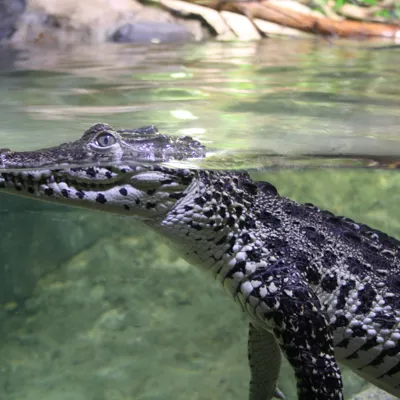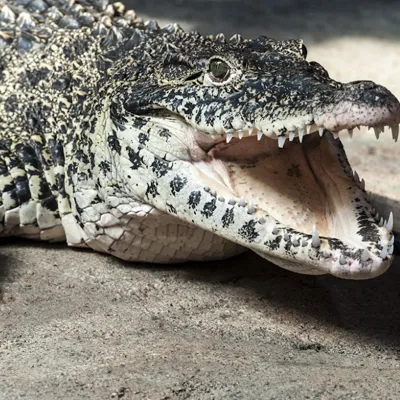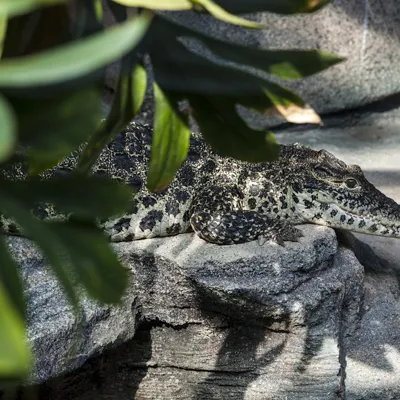
Food is supplemented with stones
Currently there are only two wild habitats of Cuban crocodiles left in the world: Cuba's Zapata swamp and the island of Isla de la Juventud. Cuba crocodiles prefer to feed on fish, rodents and freshwater turtles. They swallow their food whole with stones known as gastroliths. These help digest the food in the stomach. There have been reports made where people watched Cuban crocodiles hunting their prey together in groups.

Jumpers and sprinters
Cuban crocodiles, also known as diamond crocodiles, are some of the most intelligent and aggressive crocodiles in the world. In contrast to other crocodiles, these hunters often jump and sprint through tall grass to catch their prey instead of doing so in the water. This is possible thanks to their particularly strong legs and body size. There are fossils of land animals such as the giant sloth that show bite marks and thus prove that the Cuban crocodile used to hunt more on land.

Differences in age
The coloring of the crocodiles differs with the age of the animals. The skin of the young animals is a saturated golden brown with a black pattern of spots, while the adult Cuban crocodiles are dark gray to black and have golden yellow spots.